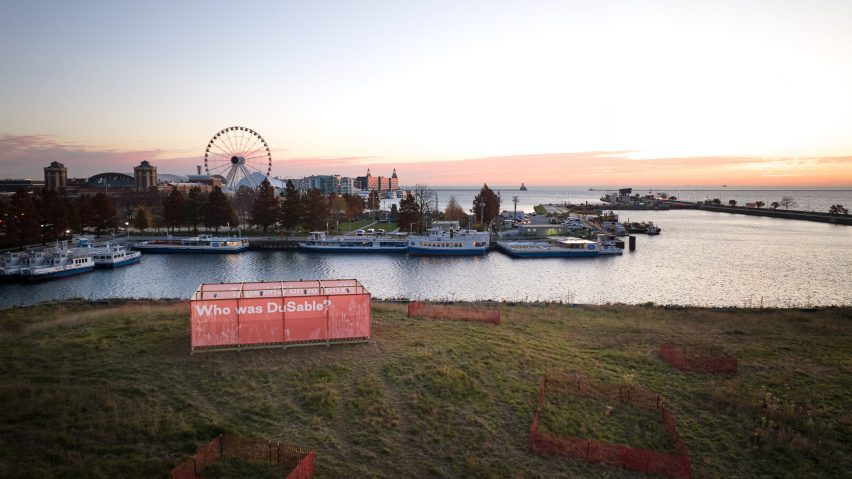
Ross Barney Architects creates pavilion exploring "layers" of early Chicago
Ross Barney Architects has created a pavilion dedicated to Haitian entrepreneur Jean Baptiste Pointe DuSable, the first non-Indigenous settler of Chicago, for the city's architecture biennial.
Parallel Histories is a pavilion made up of small, temporary structures representing the footprint of DuSable's homestead, on a park that Ross Barney Architects is revamping where the Chicago River meets Lake Michigan.
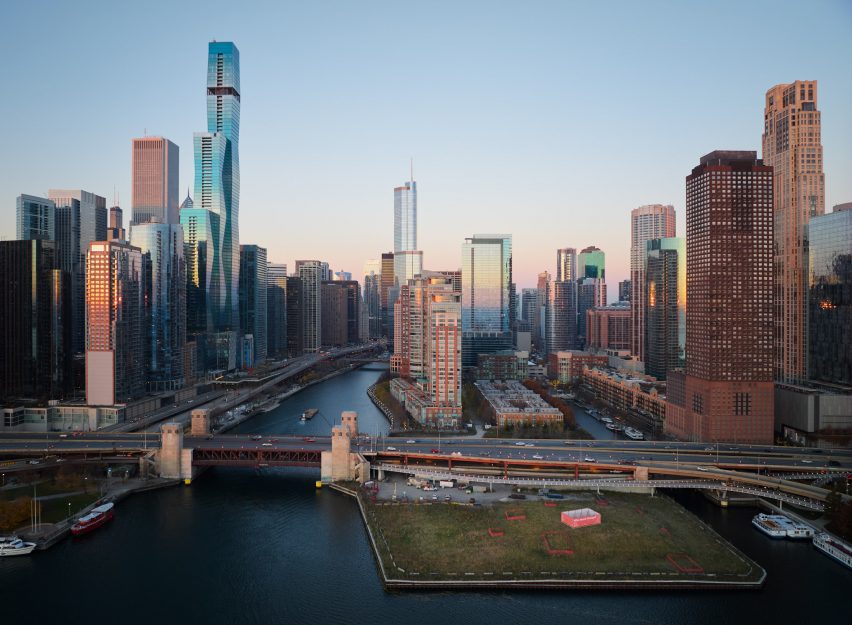
Commissioned for the fifth Chicago Architecture Biennial, the installation is meant to shine a light on this early history and bring attention to the park, which served as an industrial site for many years. Architect Ryan Gann was a collaborator on the project.
"We wanted just to make a physical representation of the impact that he had on his site. We built his house, basically out of scrim on the site," studio founder and AIA Gold Medal-winner Carol Ross Barney told Dezeen.
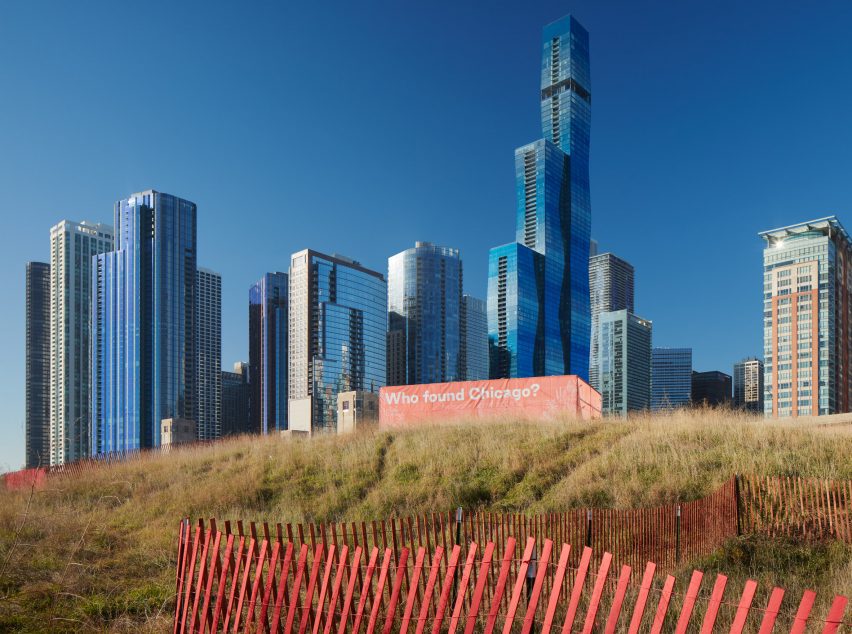
The result is a "lantern-like" structure that is illuminated by solar lighting at night and has "vital questions" about the site and its relationship to the city written in bold white lettering across the side.
The questions include "Who Was DuSable?" and "Who Found Chicago?".
"That's kind of a trick question because everybody who comes here has found Chicago," Barney explained.
Other elements of the homestead, including outbuildings, have been signified by smaller areas wrapped by orange temporary fencing.
"We had a very small budget," Barney said. "We had ideas about what we do if we had if we had more money – I think we probably would have continued to build DuSables estate."
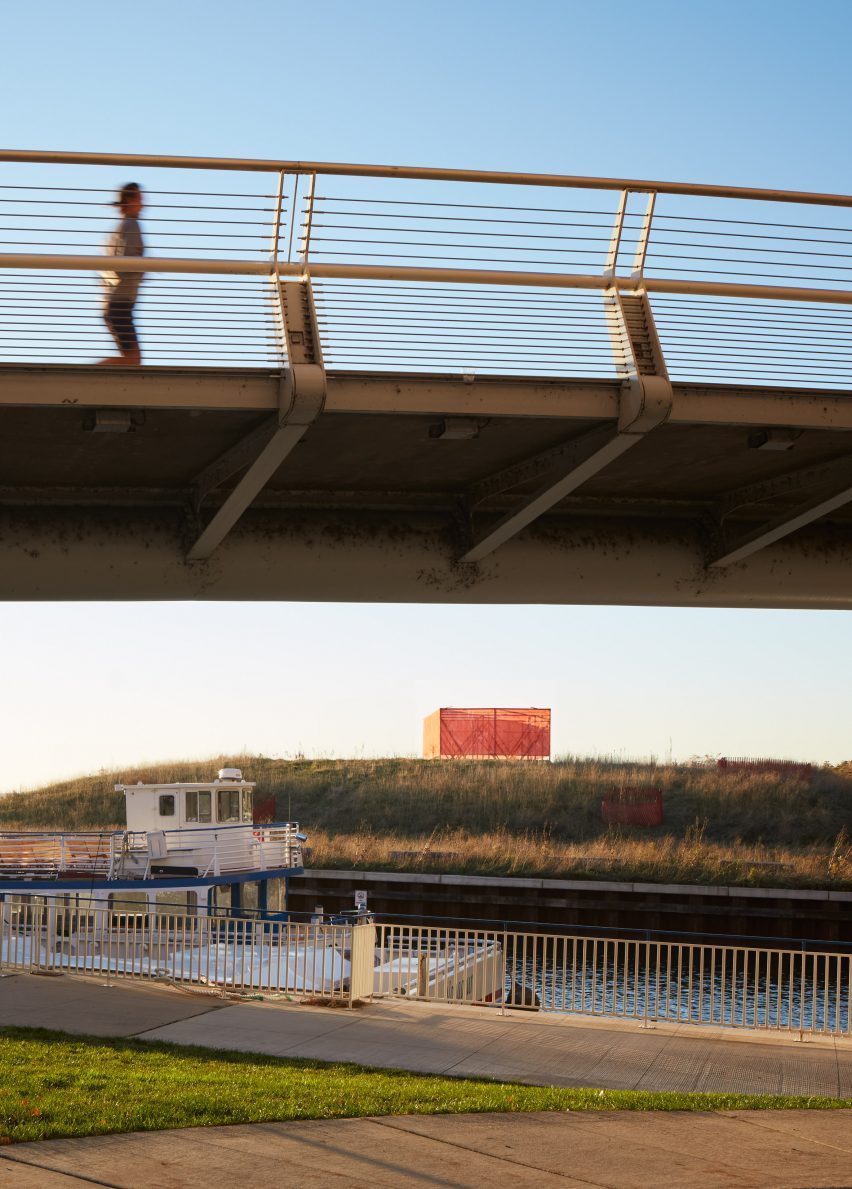
While referencing the early settler history, Barney also wanted to shed light on the history and tragedy of the Indigenous people who interacted with DuSable and who were ultimately displaced from the site as the city was settled.
Barney and local studio Brook Architecture were commissioned by the city to remake the three-acre park, which was dedicated to DuSable in 1985 by Chicago's first Black mayor, Harold Washington. Construction is planned to start on the park in 2024
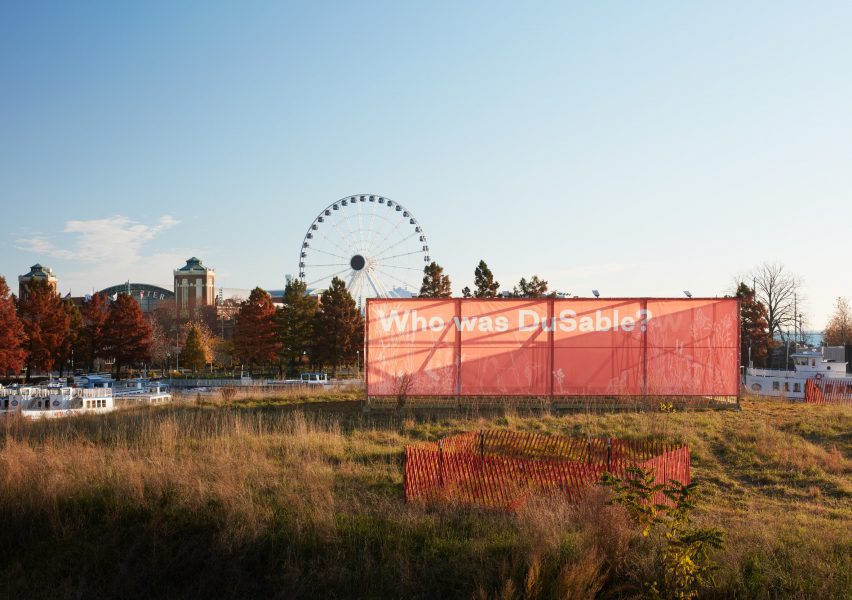
Ross Barney Architects kept the soil used to raise up the DuSable pavilion at the site and plans to convert it into three mounds representing the "three fires" used to describe the three Indigenous groups who inhabited Chicago at the point of colonisation.
The studio worked with a number of consultants, including representatives of Indigenous groups such as the Potawatomi, who are not unanimous in the acceptance of the "three fires" narrative, as well as groups who argue the importance of DuSable's Haitian heritage.
"One of the things that's really hard about this park, but I think it'll come out elegantly if we were getting long enough, is there are so many storylines that are important to contemporary people, and making them more coherent, and rational and respectful is hard," said Barney.
Barney said that the park was a physical manifestation of the conflicting histories that have gone into the making of contemporary Chicago.
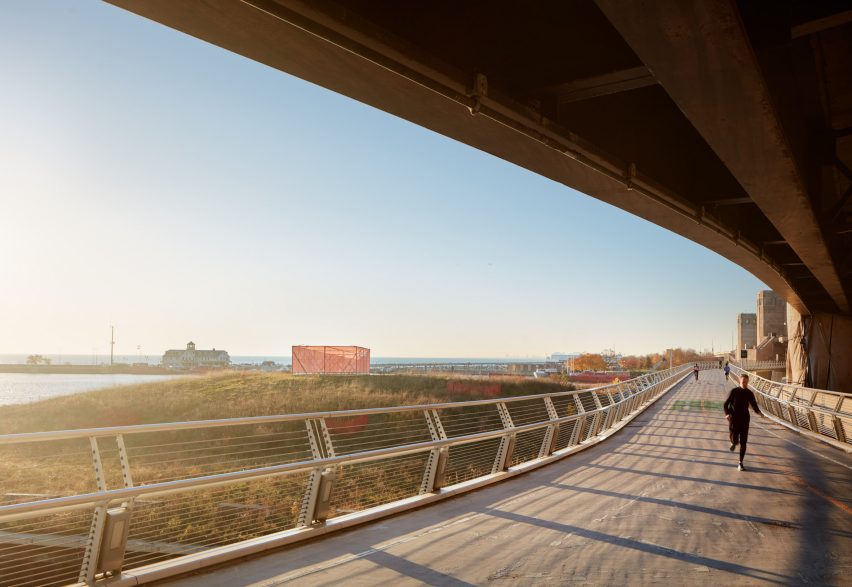
However, for the installation and the permanent park, the important aspect for Barney was to reflect in the design "those layers of use and inhabitation".
The studio also included a map showing the changing geography and settlement of the lakeshore in a graphic installation presented at the Chicago Cultural Center as part of the biennial.
The park also marks an important cap in Barney's career, whose studio was operative in redesigning the city's riverwalk.
"For me, having spent you know, on our 20 years of my life, designing the riverwalk, it's really cool to get to the end where you touch the lake," she said.
The photography is by Kendall McCaugherty/Hall+Merrick+McCaugherty Photographers.
The Chicago Architecture Biennial is on from 21 September 2021 to 11 February 2024. For more events, exhibitions and talks in architecture and design around the world visit the Dezeen Events Guide.